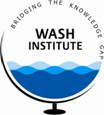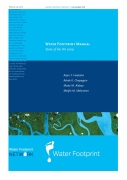Political
Climate change threats to India's water resources and emerging policy responses - From the book 'Indian climate policy: Choices and challenges', by the Henry Stimson Centre.
Posted on 14 Apr, 2010 11:01 AMThis book published by Henry L. Stimson Centre highlights the richly diverse nature of India's views on climate change through its range of essays. These essays demonstrate and challenge the international perception of India as a monolithic actor with a single set of opinions and views in the climate change negotiations.
In this chapter, the author discusses the strengths and the weaknesses of India's climate policy in the context of the increasing threats that have been identified to the water resources in the country. The author states that India's climate policy is still in its emerging state and argues that though the policy does highlight many important areas related to climate change, it does not give adequate attention to a very crucial area of water management.
Open Source GIS Training Program - IIT Madras, Chennai
Posted on 13 Apr, 2010 09:31 PMProgram Name : Open Source GIS - Quantum GIS – 5 Day Training Program
Organiser: IIT Madras in collaboration with kCube,
IIT Madras in collaboration with kCube, Chennai is organizing a five day Training Program on Open Source GIS – Quantum GIS.
Making NREGA work better: A brief note by Public Interest Foundation
Posted on 13 Apr, 2010 01:16 PMThis note by the Public Interest Foundation (PIF) presents a proposal for making National Rural Employment Guarantee Act (NREGA) work better. It offers an alternative to the existing rigid framework for implementation and complex procedures leading to bureaucratization of the implementation process thereby causing uncalled-for delays. The note is a follow-up of its collaborative study with National Council for Applied Economic Research (NCAER) on “Evaluating Performance of NREGA” as well as the Comptroller and Auditor General's (CAG) performance report on implementation of NREGA.
Implementation of National Rural Employment Guarantee Scheme in West Bengal: A field report by the Right to Food Campaign
Posted on 13 Apr, 2010 12:48 PMThis report from the Right to Food Campaign traces the implementation of National Rural Employment Guarantee Scheme (NREGS) in West Bengal and points to the failure of the State in guaranteeing basic entitlements. It asserts that West Bengal is way behind other States, in implementation of this scheme, as per the data on NREGS website.
Cost Effective Sustainable Sanitation – An Indian Experience, WASH, New Delhi
Posted on 13 Apr, 2010 11:30 AMWater, Sanitation and Hygiene (WASH) Institute National Conference
Theme:“Cost Effective Sustainable Sanitation – An Indian Experience”

Organizers:
WASH Institute, Plan India, Ministry of Rural Development, Government of India, UNICEF, WES-Net India, Government of India, member agencies
Venue:
Indian Habitat Centre (IHC), Lodhi Road, New Delhi, India
Description:
Water, Sanitation and Hygiene (WASH) Institute is aiming to organize a national level conference on sanitation.WASH Institute is planning to bring all the key sector players / practitioners together to share their success stories and approaches in promoting sustainable sanitation in the country to overcome some of the key challenges. Also to define the strategy to scale-up good practices in an efficient and effective ways towards making open defecation free nation. The proposed national meet would be a mini sanitation conference before SACOSAN IV in Sri Lanka next year.
Training in EPANET - Dynamic Hydraulic Modelling Software for Water Distribution Systems.
Posted on 13 Apr, 2010 11:19 AMTraining in EPANET
Get trained in EPANET - The software for dynamic hydraulic modelling of water supply distribution systems.
Training in EPANET - Dynamic Hydraulic Modelling Software for Water Distribution Systems
Posted on 13 Apr, 2010 11:15 AMGet trained in EPANET - The software for dynamic hydraulic modelling of water supply distribution systems.
The course shall include:
Hydrological inventory of South Bihar river basins – A report by National Institute of Hydrology
Posted on 12 Apr, 2010 12:25 PMThis report by National Institute of Hydrology provides a compilation of the hydrological information of seventeen different river basins of South Bihar (now Jharkhand). Hydrological modeling of a basin requires detailed hydrological information about the basin. Further, the hydrological information of a region or a basin is of immense use to water resources planners and managers. However, the hydrological information collected by different organizations are often scattered and are not in representable form.
NBA's indefinite action starts from April 11 : An appeal for solidarity
Posted on 12 Apr, 2010 10:22 AMAriticle Courtesy: National Alliance of Peoples' Movements
Dear Saaathis,
You all must have got the word by now ...Narmada is in serious crisis ...Not just the people and the environemnt, but the very project itself today...And unjust politics is also at its peak again ...This is the last and critical leg of the SSP battle...
Thousands of us are to embark on an indefinite mass action of Narmada from April 11th and sit before the Narmada Control Authority from the 13th at Indore. The situation is very serious and highly politicized, since even as there are 2 lakh adiavasis, farmers, fish workers, labourers yet to be rehabilitated in the submergence area, only corruption has increased ten-fold and gross environmental non-compliance has been exposed by the latest Devender Pandey Committee.
Water Footprint Manual: State of the art - A method of water footprint assessment by the Water Footprint Network (November 2009)
Posted on 11 Apr, 2010 07:37 PM The Water Footprint Manual (2009) by the Water Footprint Network (WFN) is a comprehensive and up-to-date outline of the method of water footprint assessment. It introduces how water footprints can be calculated for individual processes and products, as well as for consumers, nations and businesses.
The Water Footprint Manual (2009) by the Water Footprint Network (WFN) is a comprehensive and up-to-date outline of the method of water footprint assessment. It introduces how water footprints can be calculated for individual processes and products, as well as for consumers, nations and businesses.
The concept is introduced as a comprehensive indicator of freshwater resources appropriation, as against the traditional and restricted measure of water withdrawal. The hidden water use behind products are measured over the full supply chain and water consumption volumes are measured by source and polluted volumes by type of pollution. All components of a total water footprint are specified geographically and temporally. Blue water (surface and groundwater), green water (rainwater stored in the soil as soil moisture) and grey water (polluted water) footprints are defined and are included along with the indirect water use in measuring the overall water footprints.